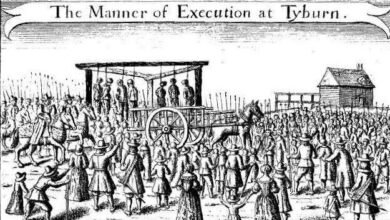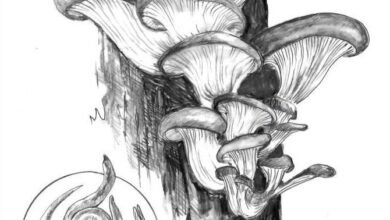The Griggs Family and the Loyalist Migration to Canada


 Alexander Griggs (1717-1801) was 58-years-old and living in Dutchess County, NY, when he, by order, signed the Articles of Association in Poughkeepsie in 1775. Not soon after, he moved to Halfmoon, in Saratoga County, with his wife Hester Freer Griggs (1727-1801) and their three sons, Abraham, John and Simon.
Alexander Griggs (1717-1801) was 58-years-old and living in Dutchess County, NY, when he, by order, signed the Articles of Association in Poughkeepsie in 1775. Not soon after, he moved to Halfmoon, in Saratoga County, with his wife Hester Freer Griggs (1727-1801) and their three sons, Abraham, John and Simon.
It appears that although Alexander had been forced to declare his allegiance to the Patriot cause, all three of his sons remained loyal to King George III during the Revolutionary War. They were indicted and convicted of crimes against New York, and as a result, Abraham had his Halfmoon property was confiscated.
Alexander and Hester Griggs remained in Halfmoon during and after the war and are said to be buried in the Middletown Cemetery upon their death in 1801, but a marker for them no longer exists. They had outlived their sons Abraham and John, who, along with Simon, are buried in the United Empire Loyalist cemeteries in Noyon, Quebec.
Abraham Griggs owned his farm in Halfmoon with his brother-in-law Alexander Schutt, and John Griggs were all recorded as enlisted men in the 12th Regiment of the Albany County Militia. Although their regiment was active in the Battles of Saratoga, it appears that Abraham and John had been engaged in Loyalist activities before the British advance from Canada in the fall of 1777.
As early as February 1776, Abraham and John declared their allegiance to the Crown when they signed a letter published in the London Gazette. Signed by some 140 like-minded subjects, the letter was read to the king in his bedchamber and “His Majesty was pleased to receive [it] very graciously.”
The signers expressed their “Detestations and Abhorrence of the most unnatural Rebellion” and extolled the “Blessings we enjoy under your Majesty’s mild and happy Reign.”
The letter ended with the hope that the king’s “Fleets and Armies would, with Divine Providence, will soon chastise and bring back to their Duty and Obedience, these deluded Persons, who may have dared to violate the Peace and Order of your Majesty’s Dominions in America.”
With their position clearly stated, at least in London, Abraham and John Griggs did not escape scrutiny at home. On May 13, 1777, the Albany Committee of Correspondence minutes mention Abraham Greggs as having voluntarily taken the Oath of Allegiance. He was discharged from confinement and permitted to return home.
The Schenectady Committee of Correspondence minutes of August 6, 1777, record that John Griggs had been said to use “some very unbecoming Expressions” when he drank to the health and success of King George III at the house of John Bradt.
Based on sworn affidavits from William Moore and John Bradt, he was committed to the jail in Albany to be released the next day after having made a “most humble concession” to the board and promised future amendment.
Eventually, Alexander Schutt was indicted in July 1780 and convicted of crimes against New York State in August of 1782. Abraham Griggs was indicted April 1782 and convicted in April 1783.
By their own admission, they were engaged in aiding and provisioning Loyalists on their travels to and from Canada. They fled towards Canada in 1780 and eventually found employment with the British Army in the engineering department.
John Griggs was indicted on June 9, 1780, and convicted of crimes against New York State on October 28, 1780. He was also employed by the British Army as an “express,” or messenger during the war according to the Old Empire Loyalists List.
Youngest son Simon Griggs was indicted July 29, 1780 and convicted of crimes against New York State August 3, 1780. He was cited in the United Empire Loyalist List as being an associate of Captain John Savage. He occupied himself during the war with spying and sabotage on behalf of the British Army.
Abraham Griggs and Alexander Schutt applied to the British government in 1786 and 1787 for the loss of their Halfmoon farm. They estimated that their losses amounted to 1,202 pounds, an amount that included land and household items. They were settled at Caldwell Manor in Quebec in ca. 1787.
Where the spouses of Abraham and John Griggs were during and directly after the Revolutionary War? Because the birth locations of John Grigg’s sons Simon and Abraham are in Schaghticoke and Halfmoon in 1780, it appears that John was still living in the area.
Youngest brother Simon also appeared to remain in Halfmoon. He and his wife Hester Freer Griggs’ had two children, Catherine and Henry, that were born there in 1784 and 1786, and he paid taxes in Halfmoon in 1786 and 1788 as well. There is no record of his farm being confiscated as a result of his conviction.
Alexander Schutt and Abraham Griggs were back in the United States by 1790, according to the census, living near the Canadian border in Champlain, NY, Abraham with his spouse Sarah Scutt Griggs and their two children, Nancy and Alexander. They families lived near each other and each owned an enslaved person.
By 1794 John Griggs was living in Petitioners, Vermont, according to the Vermont State Census, perhaps with his spouse, Annetje Schouten Griggs and their children. Simon and his family took advantage of free land and low taxes offered by Canada and moved to the Shefford township by 1801. According to the Letters Patent of February 10, 1801 filed by Captain John Savage – the first permanent resident of the area – he and his associates were among the first settlers.
Abraham, John, and Simon Griggs and their extended family members are buried in Canada. Like many other Loyalists, the Griggs wartime devotion to the British cause uprooted their lives in America and led them to join the migration northward to start a new life.
Read more about Loyalists in New York.
This essay is presented by the Saratoga County History Roundtable and the Saratoga County History Center. Follow them on Twitter and Facebook.
Sue Thompson is a volunteer at the Saratoga County Historian’s office and a member of the Clifton Park Historic Commission. She lives in a house built by a repatriated Loyalist.




